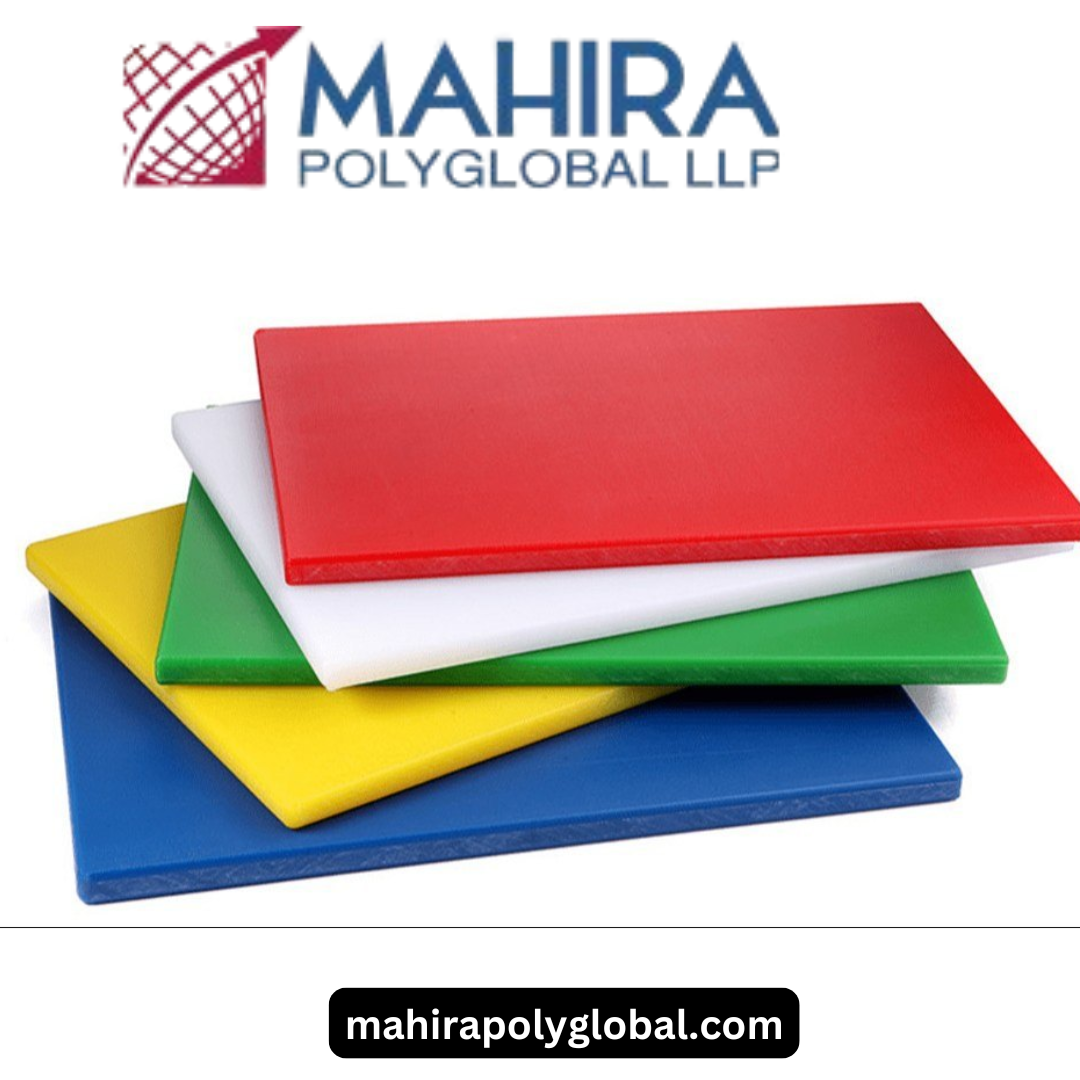High-Density Polyethylene (HDPE) sheets have become essential components of modern industrial, agricultural, and commercial applications. These sheets, often referred to as HDPE sheets plastic in various contexts, are renowned for their durability, versatility, and resistance to environmental stressors. Manufactured from high-density polyethylene resin, hdpe plastic sheets are lightweight yet incredibly strong, making them ideal for diverse applications. This Mahira Polyglobal LLP explores the properties, benefits, applications, and maintenance practices associated with plastic HDPE sheets while addressing common questions related to this valuable material.
Understanding the Composition and Properties of HDPE Sheets
HDPE sheets are produced from ethylene through a polymerization process that creates a high-density molecular structure. This composition results in several key characteristics, including exceptional strength and rigidity. HDPE’s structure allows it to withstand heavy loads and resist cracking and impact, making it suitable for various demanding environments. Additionally, the sheets boast excellent chemical resistance; they are impermeable to many solvents, acids, and bases, which is particularly valuable in chemical storage and processing industries.
Moreover, the non-porous nature of HDPE sheets plastic means they do not support bacterial growth, making them a popular choice in applications where hygiene is paramount, such as food processing and healthcare facilities. Their UV resistance ensures longevity when exposed to sunlight, rendering them suitable for outdoor applications. Available in various colors and thicknesses, hdpe plastic sheets can be customized to meet specific requirements, offering an adaptable solution for numerous sectors.
Broad Spectrum of Applications for HDPE Sheets
The versatility of Plastic HDPE Sheetss extends to numerous industries, each taking advantage of their unique properties. In construction, these sheets serve vital functions such as waterproofing, vapor barriers, and protective liners for foundations and roofing systems. For instance, when installed as a vapor barrier, plastic HDPE sheets help prevent moisture from penetrating structures, which can lead to mold growth and other issues.
In agriculture, hdpe plastic sheets are utilized in various applications, including greenhouse covers, mulch films, and livestock housing. As mulch, HDPE sheets help control weeds, retain soil moisture, and regulate temperature, significantly enhancing crop yields. Their resilience against weather extremes also ensures that crops remain protected from harsh conditions. Furthermore, in livestock farming, HDPE sheets can create efficient and clean environments for animals, contributing to better animal welfare.
Environmental Impact and Benefits of HDPE Sheets
With growing awareness surrounding environmental sustainability, the role of HDPE sheets becomes even more significant. One of the most notable environmental benefits of HDPE sheets plastic is their recyclability. Unlike many other plastic products that contribute to landfill waste, HDPE sheets can be recycled and transformed into new products, reducing the need for virgin materials. Many manufacturers are now incorporating recycled HDPE into their production processes, thus promoting a circular economy.
HDPE’s production generally requires less energy than many alternative materials, resulting in a lower carbon footprint. Additionally, the production of HDPE sheets emits fewer greenhouse gases compared to other plastics. As industries increasingly focus on environmentally responsible practices, featuring plastic HDPE sheets in their supply chain can enhance a company’s sustainability profile while meeting consumer demand for eco-friendly products.
Maintenance and Care for Longevity
One of the standout features of HDPE sheets is their low maintenance requirements. Due to their non-porous surface and chemical resistance, cleaning these sheets is straightforward and effective. Most maintenance involves simply using soap and water to remove dirt and debris, allowing for easy upkeep, particularly in environments like food processing facilities where hygiene is critical.
While HDPE sheets are designed to last, periodic inspections are advisable to check for signs of wear or potential damage, especially in external applications. With proper care, these sheets can perform their intended functions for many years. In the event of minor damage, local repair methods, such as patching with HDPE-compatible adhesives, can extend the lifespan of plastic HDPE sheets, making them a cost-effective option for business operations.
Innovative Developments in HDPE Technology
The field of HDPE plastic sheets is continuously evolving, with ongoing research leading to innovative materials and applications. For example, advancements in manufacturing processes now allow for co-extrusion techniques, enabling the creation of sheets with multiple layers, each offering distinct properties. This innovation allows manufacturers to tailor specific grades of HDPE for enhanced performance, such as improved impact resistance, color retention, or even anti-static properties.
Moreover, the integration of high-tech features into HDPE sheets is on the rise. Some manufacturers are exploring the adoption of sensor technology that monitors temperature, humidity, or even structural integrity. This technology could provide invaluable real-time data to farmers, manufacturers, and builders, enabling them to optimize conditions and make informed decisions based on accurate analytics.
Economic Considerations in the Use of HDPE Sheets
While the initial cost of hdpe plastic sheets may be higher compared to other materials, the long-term benefits they offer can lead to significant cost savings. Their durability and resistance to wear and environmental conditions result in less frequent replacements, thus lowering overall expenditure in the long run. Additionally, the lightweight nature of HDPE allows for easier handling and reduced shipping costs, providing further economic advantages.
Companies investing in sustainable practices can leverage plastic HDPE sheets to improve their corporate social responsibility (CSR) initiatives, thereby attracting environmentally conscious consumers. The ability to use eco-friendly materials enhances a company’s reputation and can lead to increased market share, especially in industries where sustainability is becoming a competitive edge.
Conclusion: The Lasting Impact of HDPE Sheets on Various Industries
In summary, HDPE Sheets plastic embody an unparalleled combination of strength, versatility, and sustainability. From construction and agriculture to food processing and manufacturing, the applications of HDPE sheets plastic are vast and varied. With properties that promote environmental sustainability, these sheets facilitate responsible material management practices that are increasingly demanded by consumers and businesses alike.
As innovations in technology continue to enhance the functionality and applications of HDPE sheets, their influence in various sectors will likely expand, leading to better efficiency and lower environmental impact. The future of HDPE is bright, positioned as not just a material but also a pathway towards more sustainable industrial processes.
Frequently Asked Questions
1. What are the primary benefits of using HDPE sheets in various industries?
HDPE sheets are known for their remarkable strength, chemical resistance, and lightweight nature. These properties make them suitable for demanding applications in construction, agriculture, food processing, and more, ensuring longevity and reliability.
2. How does the recycling process for HDPE sheets work?
HDPE sheets are collected, sorted, and cleaned before being shredded into small pieces. These pieces are then melted down and repurposed into new HDPE products, effectively reducing waste and encouraging a circular economy.
3. Can HDPE sheets be customized for specific applications?
Yes, HDPE sheets can be customized in terms of thickness, color, and additional properties. Manufacturers can tailor grades of HDPE for specific performance requirements, such as UV resistance or impact strength.
4. What maintenance is required to ensure the longevity of HDPE sheets?
Maintenance of HDPE sheets is minimal; regular cleaning with soap and water is usually sufficient. Periodic inspections for damage or wear can help in early detection of problems, ensuring that the sheets maintain their performance over time. Minor damages can often be repaired with specialized adhesives designed for HDPE materials.




